Louis Rossignol (1694) was a master calligraphist.
"Not all calligraphy is the same. In fact, this form of artistic handwriting can actually fall into a number of different styles. Essentially, there are three main of calligraphy: Western, Arabic, and Oriental. Within each style there, maybe several lettering sub-styles or hands.
Louis Rossignol was instructed in the art of writing by Olivier-François Sauvage, the most reputable teacher of the time (who didn’t publish any copybook), but was prematurely expelled from his school for having copied his master’s works so successfully that Sauvage didn’t even see the difference… Rossignol is one of the masters who invented and perfected the “Coulée” script (a cursive hybrid of the Ronde and Batarde). He didn’t publish any copybook while he was alive, this book was composed using Rossignol’s works, unfortunately, the engraver was not as subtle with his tool as Rossignol was with his pen."
“Coulée” script
"The casting is a type of French handwriting, appeared in the seventeenth century.
It represents a compromise between two previous writings, the financial one which is a fluid and inclined
form of the round, and the bastard, which is also an inclined writing. The casting is a quick and easy writing,
which satisfied the secretaries at the time of Colbert.
The casting is traced with a feathered beaked feather, which is held "longer between the fingers" in comparison with other writings.
The height (body) of the base lowercase letter is seven feathers, for a width of five nozzles. All the heads (ascending parts) are looped,
which allows them to bind together, and make a body and a beak of high, while the tails (descending parts) make a body and a half
or more if it is possible. The writing angle is 20 degrees, and the inclination of the letter is 25 degrees to the vertical.
Like the round, and unlike the bastard, the casting includes initial, middle and final letters. The casting has five categories:
Big casting. The leading is four bodies, or six when the writing is decorated with passes. Average casting. It is very fast running,
and the words remain interrelated. Interlining remains four bodies. Little casting. More difficult to master, it requires attention and sobriety.
Five-body line spacing. Financial flow, used in offices. Interlined with three bodies, heads and tails measuring only one body,
the words are linked together. Casting minute. It can be a "minute posed", reserved for beautiful works, or "minute shipped", faster,
although all are quick writings. The six-line leading makes it possible to lengthen the heads and tails."
Finding this large cotton wad booklet after years of collecting antique letters/paper, documents, and writings felt like I found a diamond in a haystack.
Not much is written about Louis Rossignol that I could find on the internet about his life.
So instead I will show some of the examples from the booklet that I found.
I found this with many other pages, in fact, it was a chapter of sorts describing different types of work in the 1700s. The booklet as it wasn't bound was not complete. The pages measured 50 cm approximately.
Last year while leading a French la Vie with Molly and Kim we found a sander
(A sander, or Pounce Pot Sprinkler, an implement used to hold a fine powder, most often made from cuttlefish bone, to sprinkle on wet ink or rough paper to make it smooth for writing. Used before blotting paper) As Kim was a calligraphist it was a delightful find. Unfortunately, it was dearly expensive and as I had never seen one before I was unsure of its value. Needless to say, we both dearly regret not buying it.
"Pounce is a fine powder, most often made from powdered cuttlefish bone, that was used both to dry ink and to sprinkle on a rough writing surface to make it smooth enough for writing. The pounce or sand is gently sprinkled all over the writing on the paper." Also, "Gum Arabic was used in printing, As calligraphers, used as a binder, to control viscosity, to add a bit of luminosity, reduce feathering and bleeding, and to prevent cracking of ink."
Kim is coming back for another adventure this May. I think a Sander is on top of her list.
How was ink made back then?
"Iron gall ink was made up from galls (usually oak-galls), copperas [copper sulfate] or green vitriol [ferrous sulfate], and gum arabic, in varying proportions; carbon inks were developed using soot."
How to Make a Feathered Pen
- Select your feather. …
- Follow the natural curve of the feather. …
- Take your marker and make a dot at the point where you'd like the writing tip to be. …
- Take the tweezers and clean out any materials left in the cut shaft.
- Dip your new quill pen into some non-permanent ink.
A writing desk why not.
When my father passed away Anna a blog reader/friend of mine made me a beautifully scripted booklet from her own pen.
Handwriting is such beautiful art, especially now as it seems to be slipping away.
Anna and Kim are both master calligraphists.
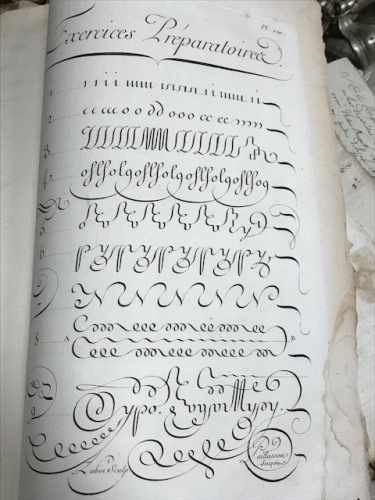
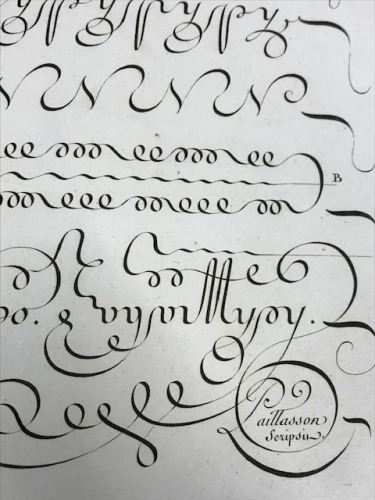
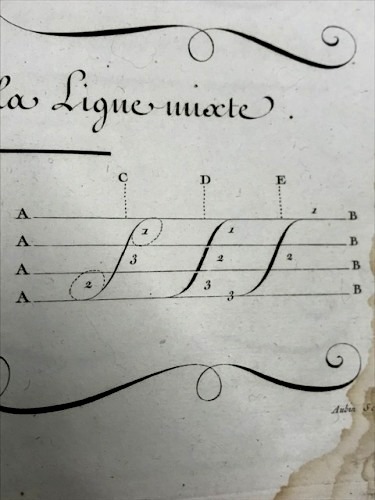
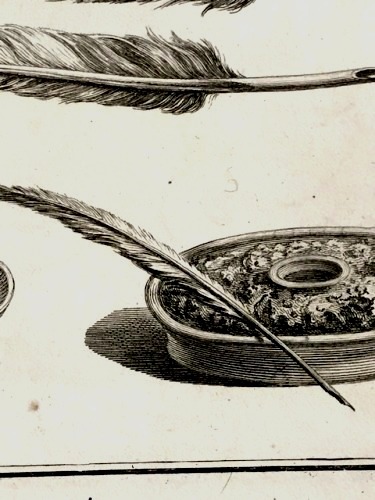
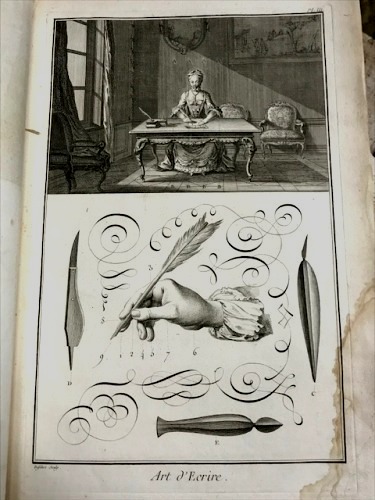

Leave a Reply